Homemade Chili Seasoning Recipe
Chili seasoning is an essential ingredient for making a rich, flavorful chili. Whether you’re looking for a quick weeknight dinner or a hearty meal for a gathering, homemade chili seasoning can take your dish to the next level. In this guide, we’ll walk you through everything you need to know, from ingredients and variations to storage tips and how much seasoning to use.
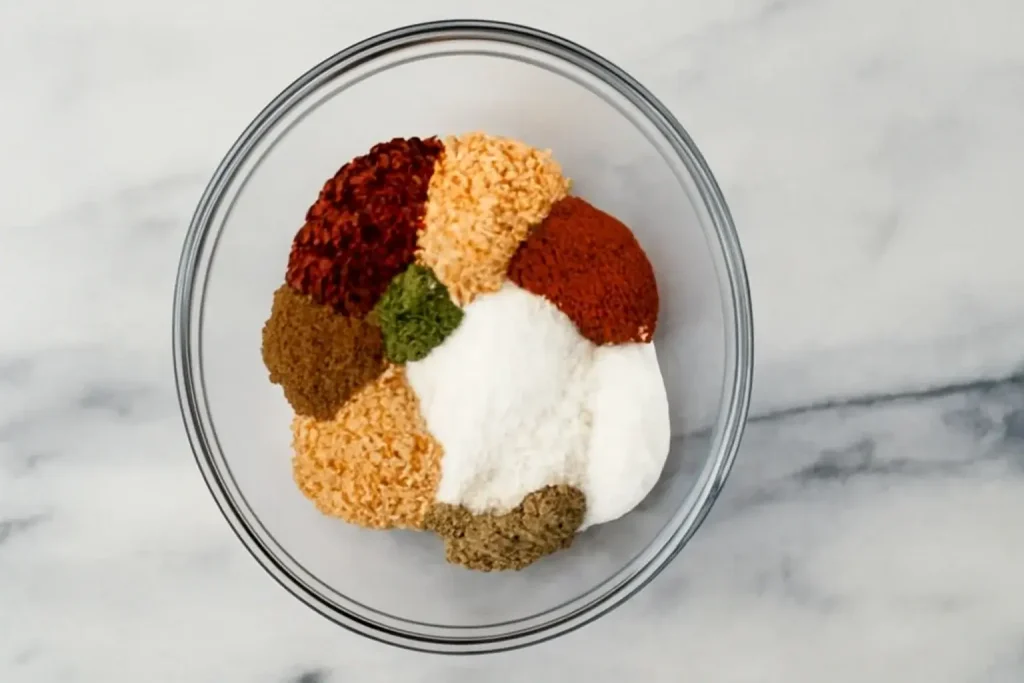
Why This Chili Seasoning Recipe Works!
Making your own chili seasoning at home is not only cost-effective but also lets you control the ingredients. You can adjust the spice level to suit your taste, add in extra herbs, and even make it a little milder for those who aren’t fans of heat. This homemade seasoning gives your chili a deep, smoky flavor that store-bought packets can’t quite match.
How to Make Homemade Chili Seasoning
Making chili seasoning is easy and quick. Follow these simple steps for a flavorful and fresh mix!
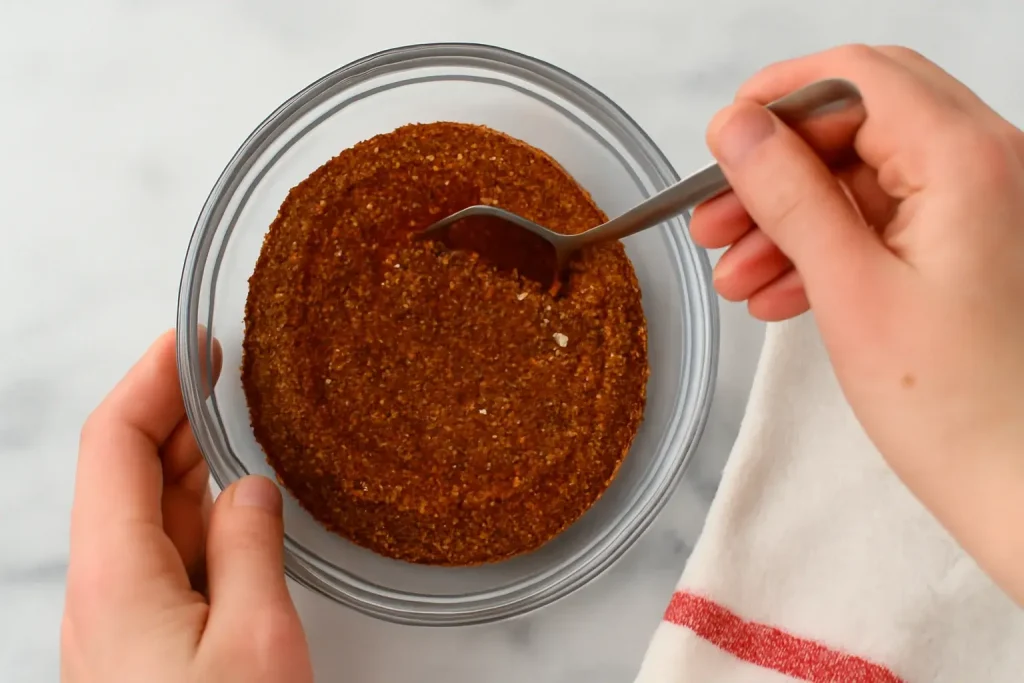
Step 1: Gather the Ingredients
Here’s what you’ll need to create your homemade chili seasoning:
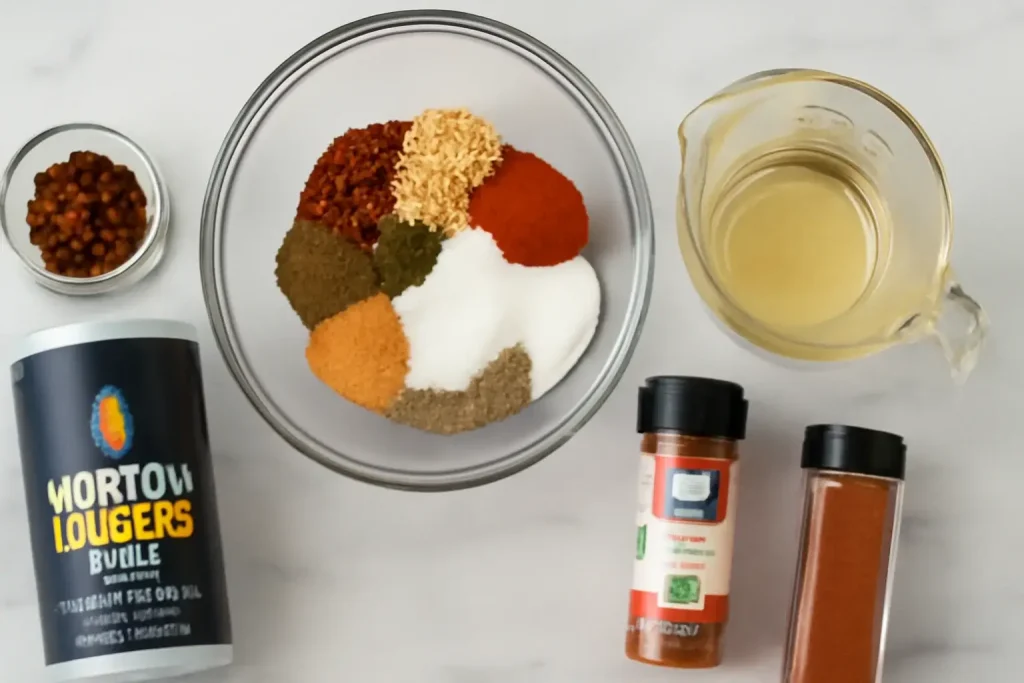
- 2 tablespoons chili powder
- 1 tablespoon cumin
- 1 tablespoon paprika
- 1 tablespoon garlic powder
- 1 teaspoon onion powder
- 1/2 teaspoon cayenne pepper (adjust to taste)
- 1 teaspoon dried oregano
- 1/2 teaspoon salt
- 1/2 teaspoon pepper
Step 2: Mix the Ingredients
In a bowl, combine all the ingredients and stir until well mixed. Store in an airtight container for future use.
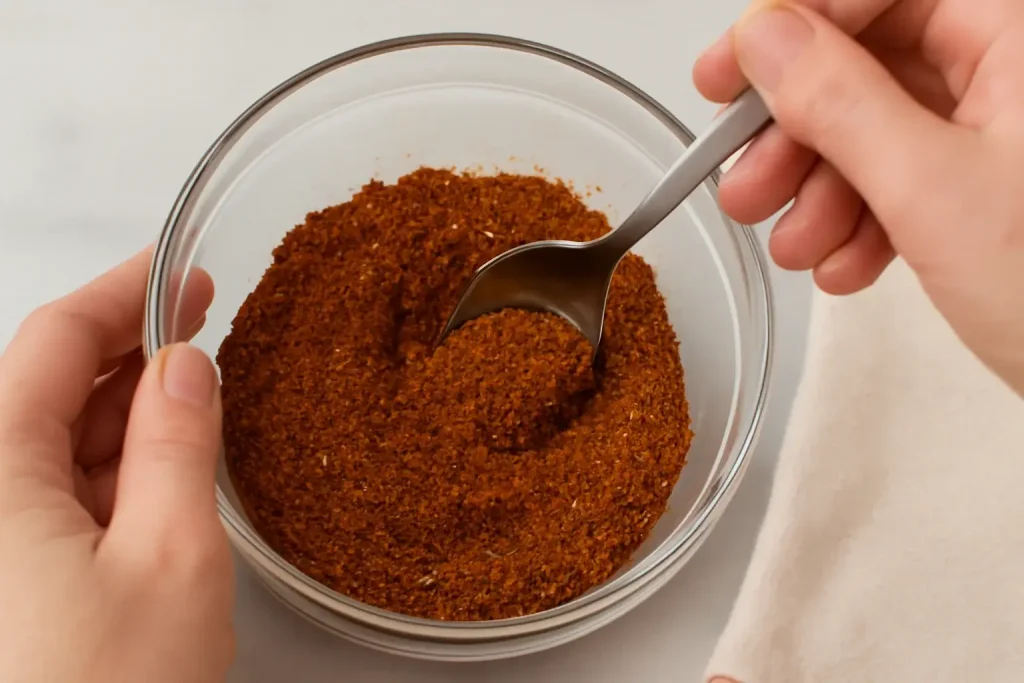
What are the Ingredients in Chili Seasoning?
Chili seasoning is a blend of herbs and spices that add a burst of flavor to your chili. The main ingredients include chili powder, cumin, garlic powder, and paprika. These spices form the base of most chili seasonings and give the dish its characteristic smoky and spicy flavor
Related Recipes You May Enjoy:
- If you’re craving a hearty, flavorful dish, try the Gluten Free Pizza Dough to enjoy a gluten-free pizza that’s easy to make and perfect for pizza lovers.
- For another comforting and creamy meal, check out Chicken Broccoli Alfredo — a delicious, cheesy pasta dish that everyone loves.
- Looking for a savory, satisfying side dish to pair with your chili? Don’t miss out on Jiffy Mexican Cornbread — it’s the perfect addition to any chili meal.
How Much Chili Seasoning Should I Use?
A typical chili packet contains about 1 ounce (28 grams) of seasoning, which is enough for a 2-3 pound pot of meat. For homemade seasoning, start with 2 tablespoons for every pound of meat and adjust to taste.
How Much Chili Seasoning is in a Packet?
In a typical packet of McCormick chili seasoning, there are about 1 ounce of seasoning. This usually works for about 1-2 pounds of ground meat, depending on how much spice you like in your chili.
Are Chili and Taco Seasoning the Same?
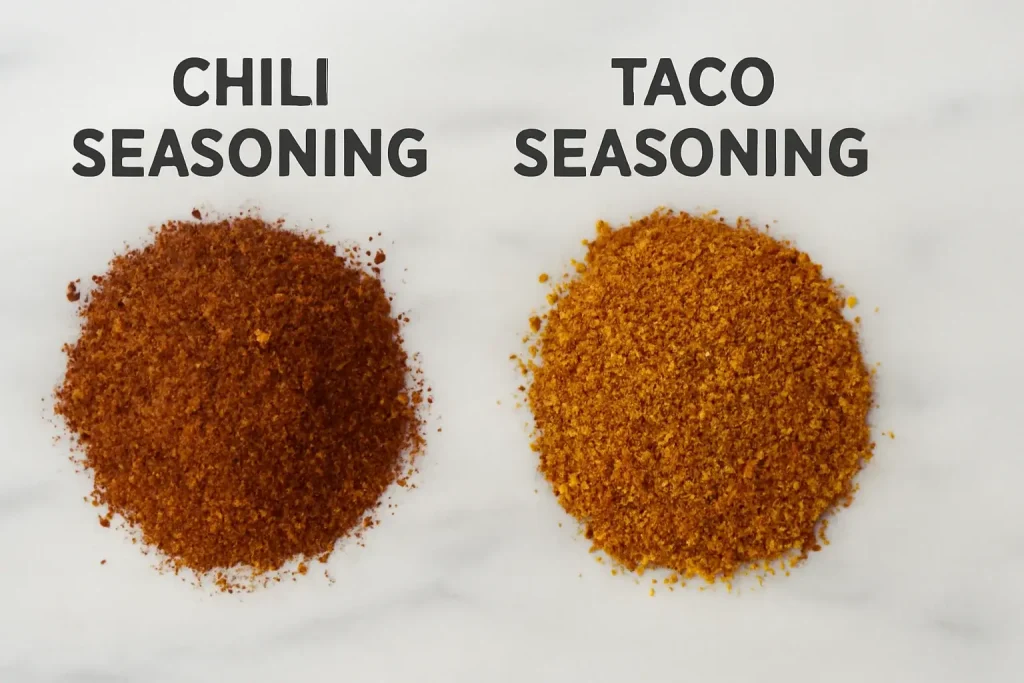
No, chili seasoning and taco seasoning are different. Chili seasoning is more robust and smoky, often containing cumin, garlic, and oregano. Taco seasoning, on the other hand, is spicier and often includes additional spices like crushed red pepper flakes.
Can Chili Seasoning Substitute Taco Seasoning?
Yes, chili seasoning can be substituted for taco seasoning in a pinch. However, be aware that chili seasoning has a deeper, smokier flavor, while taco seasoning is typically spicier. Adjust accordingly if you prefer a milder or spicier taste.
Other Uses for Homemade Chili Seasoning Mix
Besides chili, this seasoning mix can be used in a variety of dishes, such as:
- Tacos: Add to ground beef or chicken for flavorful taco meat.
- Soup: Stir into tomato or vegetable soup for added depth.
- Roasted Vegetables: Sprinkle on potatoes, carrots, or other veggies before roasting for a spicy kick.
- Popcorn: Sprinkle over popcorn for a unique, spicy snack.
Great Chili Recipes to Use This Homemade Chili Seasoning Mix In
Now that you have your seasoning, here are some great chili recipes to try:
- Classic Homemade Chili: A traditional recipe that uses your homemade seasoning blend for a comforting meal.
- Black Bean Chili: Perfect for vegetarians or those looking for a hearty meat-free option.
- Creamy White Chicken Chili: A lighter, creamy take on the classic chili.
- Easy Pumpkin Chili: A fall favorite, combining pumpkin with the smoky flavors of your seasoning.
How to Store Your Homemade Chili Seasoning
Storing your homemade chili seasoning is easy and helps maintain its flavor:
- Airtight Container: Store in a clean, dry, airtight container to maintain freshness.
- Shelf Life: The seasoning can last for up to 6 months when stored properly. After that, the spices may begin to lose their potency.
- Avoid Moisture: Keep the seasoning in a dry area, away from humidity or moisture, as it can degrade the quality.
Tips for Making the Best Chili Seasoning
- Adjust to Taste: If you prefer a spicier kick, increase the cayenne pepper or add a little chipotle powder.
- Smoked Paprika: For a smokier flavor, opt for smoked paprika instead of regular paprika.
- Fresh vs. Dried Spices: Use fresh, high-quality dried herbs and spices to ensure a vibrant flavor in your seasoning mix.
Chili Seasoning Recipe Notes & Tips
- Adjust the Spice Level: If you like your chili spicier, increase the amount of cayenne pepper or chili powder.
- Customize the Flavor: Feel free to experiment by adding other spices like smoked paprika or cinnamon for unique twists.
- Mixing for Larger Batches: You can double or triple this recipe and store it in bulk for future use.
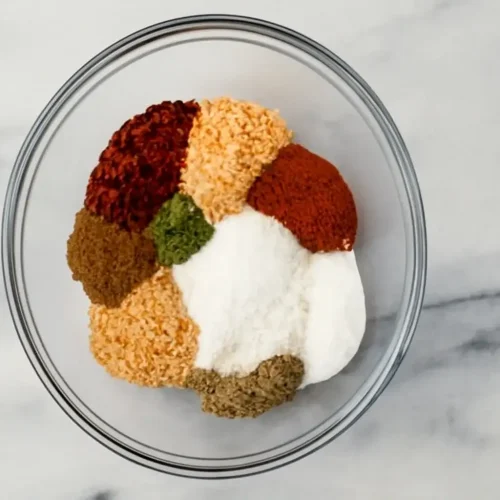
Chili Seasoning Recipe
Ingredients
- 2 tablespoons chili powder
- 1 tablespoon cumin
- 1 tablespoon paprika
- 1 tablespoon garlic powder
- 1 teaspoon onion powder
- 1/2 teaspoon cayenne pepper (adjust to taste)
- 1 teaspoon dried oregano
- 1/2 teaspoon salt
- 1/2 teaspoon pepper
Instructions
- In a small bowl, combine all the ingredients together.
- Stir until well-mixed.
- Store in an airtight container in a cool, dry place. Use within 6 months for optimal flavor.
- For every pound of meat, use 2 tablespoons of seasoning (or adjust to taste).
Notes
- This recipe is fully customizable. Add more cayenne pepper for extra heat or skip the salt if you’re watching sodium intake.
- You can also experiment by adding chipotle powder or smoked paprika for a different smoky flavor.
- Store your chili seasoning in a glass jar to maintain freshness for longer.
- Calories: 16
- Fat: 0g
- Carbohydrates: 3g
- Protein: 1g
- Fiber: 1g
- Sugar: 0g
- Sodium: 210mg
Frequently Asked Questions (FAQs)
Can I Make Chili Seasoning Without Cumin?
Yes! If you don’t like cumin or don’t have it on hand, you can skip it and add extra paprika or chili powder instead.
Can I Use Homemade Chili Seasoning for Other Dishes?
Absolutely! Homemade chili seasoning is versatile and can be used in a variety of dishes like tacos, soups, and roasted meats or vegetables.
What’s the Difference Between McCormick and Williams Chili Seasoning?
McCormick’s chili seasoning tends to have a slightly spicier and more commercial flavor, while Williams chili seasoning includes a different blend of herbs and spices, giving it a different profile. Both are great, but making your own seasoning gives you complete control over the flavors.
Recipe for Chili Seasoning Variations
You can customize this chili seasoning by adding or omitting ingredients to suit your preferences. Some variations include:
- Spicy Chili Seasoning: Add extra cayenne pepper or crushed red pepper flakes for more heat.
- Mild Chili Seasoning: Reduce the cayenne pepper or eliminate it entirely for a milder seasoning.
- Smoky Chili Seasoning: Include chipotle powder or smoked paprika for a deeper smoky flavor.
Conclusion
Making your own chili seasoning is a simple, cost-effective way to enhance the flavor of your chili and other dishes. With just a few basic ingredients, you can create a seasoning blend that’s customizable to your taste, whether you prefer it mild or extra spicy. Not only does homemade chili seasoning give your meals a fresh, rich flavor, but it also allows you to avoid the preservatives and additives found in store-bought packets.
Whether you’re using it for a classic chili, a savory taco meat, or even roasted vegetables, homemade chili seasoning is a versatile and delicious addition to your kitchen. Try this recipe today and elevate your cooking with the bold flavors of your own creation. Happy cooking!






